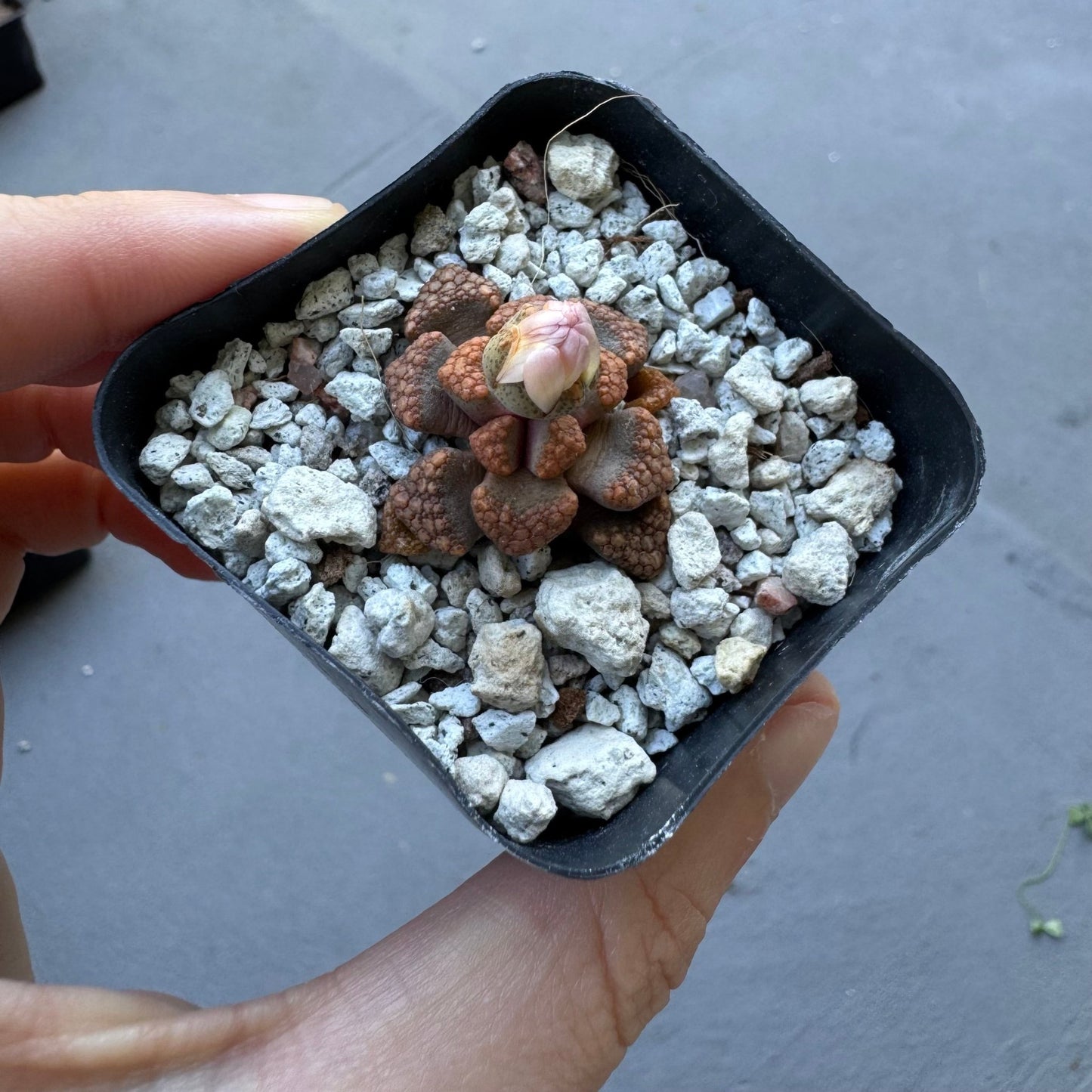Rare Plantsman
Titanopsis hugo-schlechteri
Titanopsis hugo-schlechteri
Couldn't load pickup availability
This rare, slow-growing succulent from arid regions of South Africa has thick, warty leaves covered in textured tubercles that help it blend in with the gravel and limestone of its native habitat. The result? A living sculpture that feels ancient and oddly endearing.
Rosettes stay small and tight, usually under a few inches across, making this an excellent choice for small pots, dish gardens, or tightly curated succulent collections. In late fall to early winter, it produces daisy-like yellow flowers that rise just above the leaves—a charming surprise from such a rugged-looking plant.
Like other Titanopsis, it prefers bright light, excellent drainage, and a dry, cool winter rest. It grows most actively in fall and spring and tends to go semi-dormant in the heat of summer. Water sparingly—only when the soil is bone dry—and cut back drastically in winter. This is a plant that thrives on restraint.
Share




